Learning to save on food isn’t hard, but it does take work! Use this extensive list of 20 tips to learn how to save money on groceries, so you can feed your family healthy food on a budget.
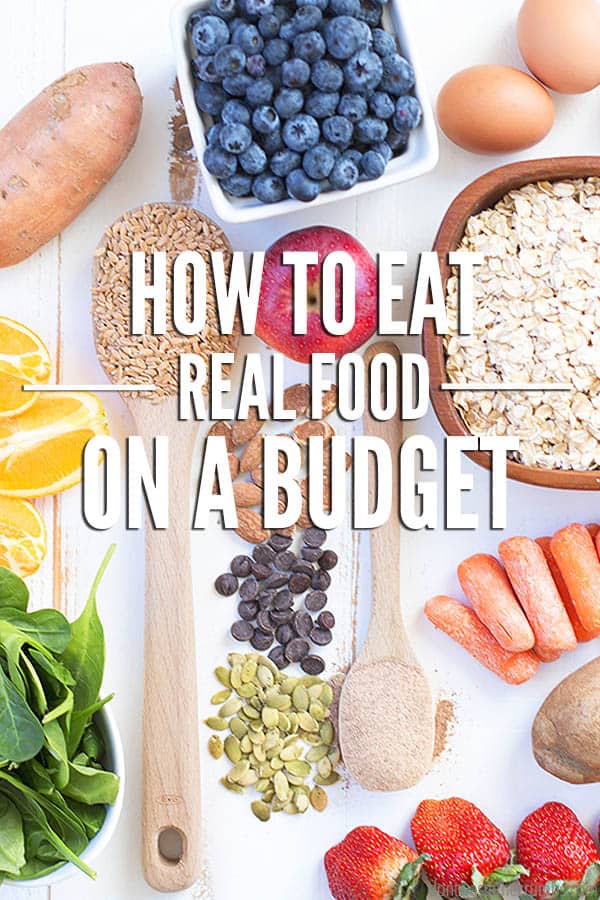
Years ago, my husband asked if we could cut out the boxes of processed food we relied on for the bulk of our meals. For a minute I’m sure I looked like a deer caught in headlights.
What would we eat?!
We didn’t have a lot of money and word on the street was that healthy eating was expensive.
Somehow though, I learned how to save money at the grocery store, without buying more boxes.
Through that journey, I’ve documented all of the great tips I’ve learned and laid them all out here. It is my passion to help you feed your family healthy food on a budget!
So how do we save on food? Look no further.
HOW TO SAVE MONEY ON GROCERIES
1. MAKE A MEAL PLAN
The number one way to start saving money on groceries is to make a meal plan. The problem is, most of the time we complicate it. Meal planning is very simple!
Look in your fridge and pantry. Determine what meals you can make with what you have. Write it down. You just made a meal plan! Here are some more tools to help you get started:
- How to Make a Meal Plan that Works
- 6 Tips to Help You Stick to a Meal Plan
- 30 Minute Dinners – Done For You Meal Plans
2. SET A REAL FOOD GROCERY BUDGET
There is no clear-cut, one size fits all answer to “What’s a good grocery budget?” Your unique family situation will determine what your budget should be. What I can give you, though, are some factors to consider and an example of how my family has kept our supermarket money down for many years.
- How to Make a Grocery Budget
- The Secret to a Healthy Grocery Budget
- How to Budget for Bulk Purchases
3. COOK FROM SCRATCH
Besides making your meal plan, cooking from scratch is one of the greatest ways to save on food. But you also have to keep in mind that you should only make food from scratch when it makes sense.
If you need to eat gluten-free, don’t make bread. Or if your family only eats salsa once a year, buy a jar when needed. However, if your family eats a lot of mayo, that would be something to start making it from scratch!
- Best Food to Make from Scratch
- Beginner No Knead Artisan Bread
- How to Soak, De-gas, and Make Beans from Scratch
4. MAKE SNACKS AT HOME
Snacks can be a huge hang-up for families trying to eat healthier food. But in all honesty, snacks are just food in between meals! I suggest going for whole or cut-up fruits and veggies as the first choice. After that, make homemade versions of your favorite snacks to save on food. Prepackaged “snacks” at the grocery store are costly and not as nourishing!
5. LET YOUR APPLIANCES WORK FOR YOU
I won’t lie. Buying real food is a great way to save on food, but that also means spending more time in the kitchen. Use that time wisely and let your appliances work for you. Between the stand mixer, blender, Instant Pot, and slow cooker, I’ve got something running in my kitchen all the time! Luckily, my favorite appliances can serve a variety of purposes in my kitchen.
- 30+ Ways to Use a Stand Mixer
- 45+ Ways to Use a High-Powered Blender
- 20 Things to Know About the Instant Pot Before You Buy
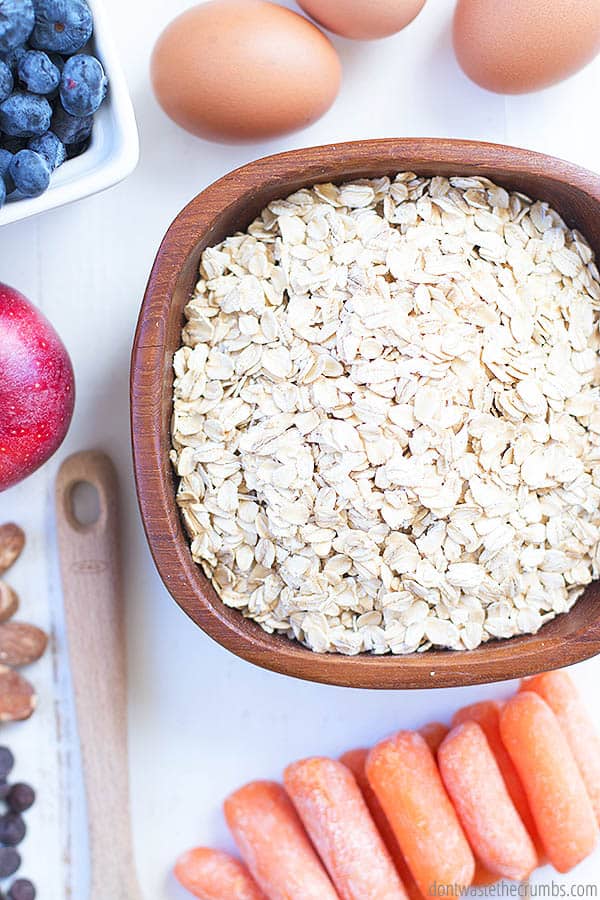
6. IF YOU DON’T HAVE APPLIANCES, INVEST IN THEM
Some appliances can be an investment up front, but they will save you TONS of time and money in the long run.
An immersion blender is a perfect example. It costs around $35, but I know for a fact that I’ve saved more than $35 in making Homemade Mayo alone!
Start saving, (use Swagbucks for free gift cards!), watch for deals and add these to your collection:
7. BATCH COOK
And batch cooking doesn’t have to mean making entire extra meals, although doubling dinner occasionally is a great way to build up a stash of easy freezer meals.
Chop extra veggies while you’re already chopping. Double your batch of rice and beans and freeze extras for later. Put your oven to work on an extra batch of muffins while you’re cooking on the stovetop or cleaning up.
When you have extra food stocked in the freezer, you’ll be more inclined to pull something from your stash than go through the drive thru.
- One Hour Freezer Cooking: Dump Dinners
- How to Freeze Breads and Baked Goods
- How to Save Time and Money with Batch Cooking
8. STRETCH YOUR MEAT
This concept can take some getting used to. (Especially if you have some meat and potato lovers!) The idea though is to shift your mindset to thinking of meat as a complement to the meal, not the main star.
Cook large portions of meat like a whole chicken and shred them to make them go further. Learn how to stretch your ground beef and pick dishes that allow you to add more vegetables. This also helps you buy quality meat like grass-fed beef without breaking the bank.
- How to Stretch One Chicken into Multiple Meals
- Stretching One Pork Loin into Seven Meals
- How We Afford Butcher Box
9. STRETCH OTHER FOOD, TOO
Making the most of every bit of food in your home means NOT spending more money on food at the store. Reduce your food waste by making sure to use up every bit of what you have.
Chicken stock from scraps, homemade apple cider vinegar, and regrowing food in water are great places to start.
- 12 Simple Ways to Avoid Food Waste
- Practical Ways to Save On Groceries Right Now
- How to Make Chicken Stock from Kitchen Scraps
10. GROW YOUR OWN FOOD
If you have the space and time, consider planting a garden. It can significantly reduce the cost of your food bill!
I’ve had some success and some failures over the years in my gardens, but when we get a boatload of tomatoes, I’m always excited! It means I don’t have to spend money on pizza sauce, salsa, spaghetti sauce, tomato sauce, or snacks (cherry tomatoes off the vine are divine!)
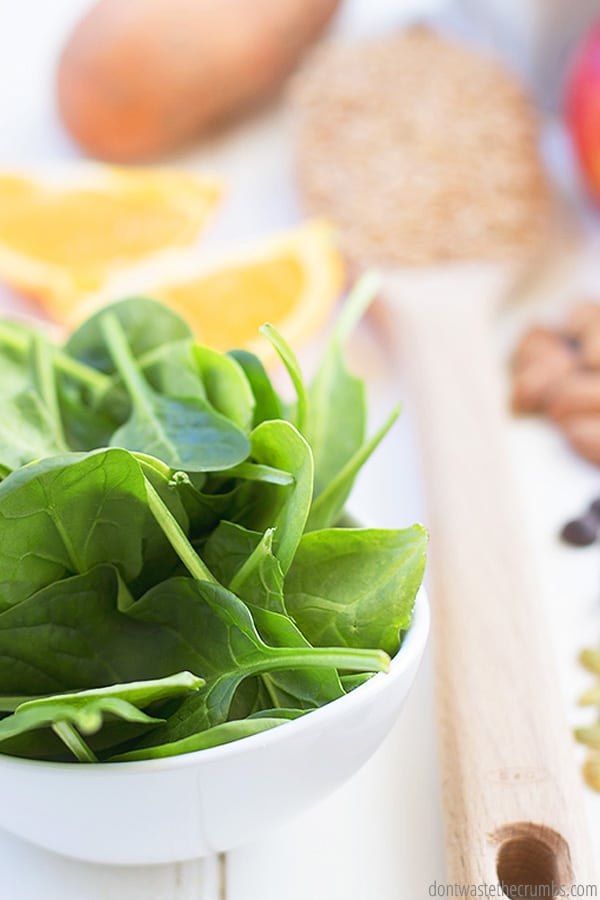
COMMON QUESTIONS ON HOW TO SAVE MONEY AT THE SUPERMARKET
What is a realistic food budget for one person?
Several factors can influence your grocery budget, including how you cook, if you have food allergies, and how many grocery stores you have access to. Read more tips for cooking real food for one person here.
How can I cut my grocery bill by 90 percent?
Following the tips in this post will give you a great starting point for lowering your grocery bill to save on food. We actually cut our budget by 50%! Make sure to read How We Cut Our Monthly Expenses by 50%.
What is a reasonable weekly budget?
Figuring out your grocery budget for the week means taking several things into consideration. Read my strategies for setting up a grocery budget in this post.
MORE TIPS TO SAVE ON FOODS
11. STOCK A REAL FOOD PANTRY
Eating real food means not buying a lot of boxed and processed foods. However, there are still a lot of staples you can fill your pantry with to make cooking at home easier.
These are just a sample of what I always keep stocked in my pantry. When I have good food on hand to make meals out of, I don’t have to consider buying cheap boxed goods at the store.
- How to Create a Real Food Stockpile with $5 a Week
- The Best Healthy Foods to Buy in Bulk
- Best Foods to Stock Up On During Holiday Sales
- How to Stock a Real Food Pantry
12. KEEP YOUR KITCHEN ORGANIZED
A clean kitchen is an efficient kitchen. And when you’re spending time making food from scratch, you need to make the most of your time! Keeping your kitchen organized and tidy will greatly increase your speed when cooking. You’ll know where your ingredients and tools are, and you’ll be able to work with ease.
- 14 Easy Baking Hacks for the Home Baker
- 9 Rules for Organizing the Real Food Kitchen
- 24 Time Saving Kitchen Hacks
13. PRESERVE YOUR OWN FOOD
Many people who garden naturally preserve their excess. But buying seasonal produce in bulk and canning or dehydrating is a great way to stock your real food pantry too!
14. IF YOU DON’T CAN OR DEHYDRATE, FREEZE!
Canning can be a little intimidating for beginners. And not everyone has a dehydrator (unless you’re saving up for one!). Another option for preserving food is to freeze it! I already mentioned batch cooking, but this goes beyond that.
You can freeze your bulk purchases or garden overflow instead of canning or dehydrating.
- Easy No-Cook Strawberry Freezer Jam
- How to Freeze Blueberries
- How to Blanch Greens and Freeze
- How to Freeze Herbs
15. EAT SEASONALLY
Eating seasonal produce is one of the best ways to get the best price on your fruits and vegetables. When produce is in season, the prices will drop, and the food will be richer and more vibrant.
Grocery stores usually lower their prices on in-season produce but shopping locally at a Farmer’s Market will also give you the best bang for your buck. This goes for conventionally grown produce and organic foods.
Use these seasonal produce guides to know what’s best each month.
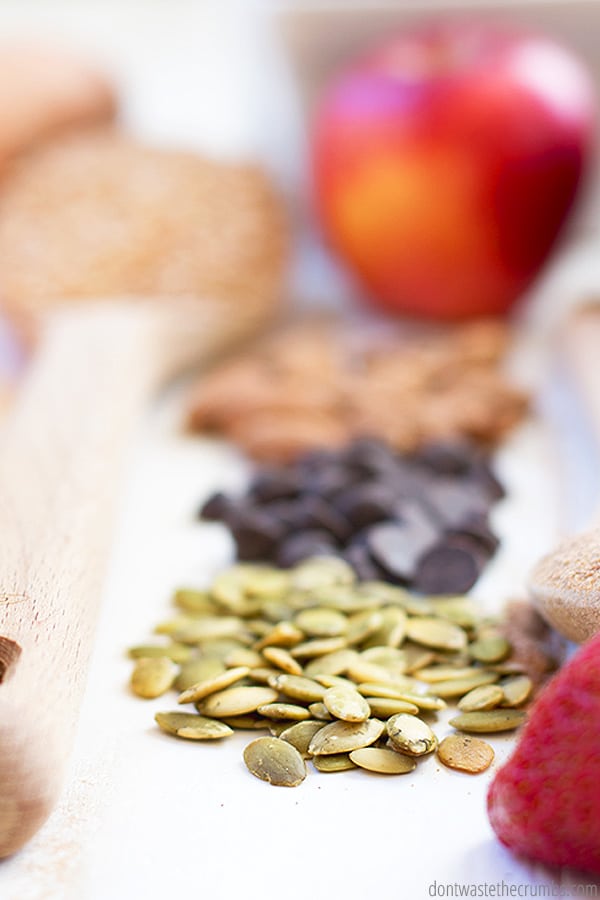
16. UTILIZE THE CLEAN 15 AND DIRTY DOZEN
When you’re shopping seasonally, also pay attention to the Clean 15 and Dirty Dozen list. This helps you know what produce you should buy organic and what can be conventional, based on your real food priorities and your budget.
For example, apples are almost always heavy in pesticides and are listed on the dirty dozen. So, I make it a point to buy organic apples. Bananas are typically on the Clean 15 list, so I usually buy conventional bananas.
- Find the most updated Clean 15/Dirty Dozen list HERE
- 38 Ways to Save on Groceries All Year
- Ultimate Guide to Shopping the Farmer’s Market
17. PAY ATTENTION TO PRICES
It’s time to start keeping track of prices. Don’t be afraid to shop around a bit too. You never know what good deals you may find. Knowing when your most purchased items are at their rock bottom price allows you to stock up and keep your pantry full of real food staples!
When looking at prices, notice that name brand and higher-priced food will be placed eye level on the shelves. The store brands and lower-priced items are typically up high or down low.
- How to Make a Price Book
- The Secret to a Healthy Grocery Budget
- Why I Quit Coupons
- Aldi vs Walmart
- Trader Joe’s vs Whole Foods
18. SHOP SMARTER
There are a lot of tricks to making the most of your grocery shopping trips. The top one that comes to mind is to know your stores. Take some time to scope out your options.
Pick one store, then learn the sales and create a strategy for outsmarting the store. Sign up for grocery rewards programs and take advantage of members-only discounts or coupons on items you were already planning to purchase. Learn when the store marks down items that didn’t sell, and which day the new sales start.
Once you have that store down, study another one! Utilize online shopping, big warehouse stores, wholesale clubs like Costco, and bulk meat purchases. You’ll get to know which stores have the best prices on the items you use most, and how often to buy them to get the best deal.
- 5 Fail Proof Ways to Reduce Grocery Spending
- How to Shop Online for Groceries
- Grocery Budget Bootcamp – the place to be for hands-on training to reduce your grocery spending and eat real food on a budget! Enrollment is currently closed, but you can join my FREE 5-day Crush Inflation Challenge and start saving money on groceries tomorrow!
19. EAT WHAT YOU HAVE
We’re making a full circle now and going back to the beginning. When you eat the healthy food you already have in the pantry, you’re automatically going to save on food by NOT buying something new! Use a pantry inventory to know what you have on hand, then meal plan from there.
- How to Save Money on a Pantry Challenge
- How to Have a No-Spend Challenge
- Loving Leftovers (Free ebook!)
20. USE FOOD SUBSTITUTIONS
You know when you go to make a recipe and you realize you’re missing an ingredient? Well, most likely you can substitute for something you already have on hand! Running to the store to buy “one” item never happens that way. Impulse buying will almost always get you! Make do with what you have and save money on groceries instead.
- 25 Save on Food Substitutions
- 15 Ideas When You Need an Egg Substitute
- 15 Substitutes for Vanilla Extract
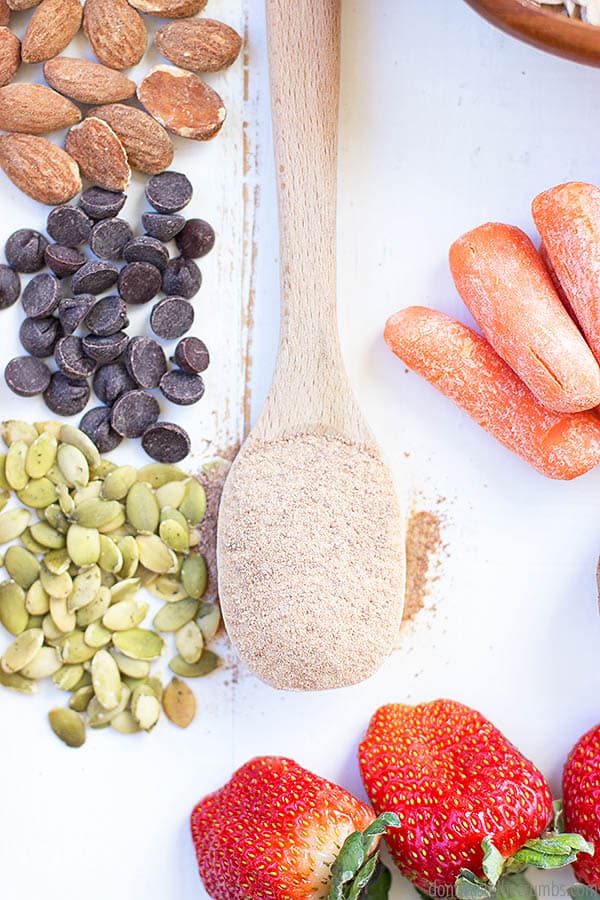
FIGHT INFLATION WORKSHOP
I realize this list of ways to save on food is LONG. I did not accomplish all this overnight. It took 8 months to no longer rely on processed food and to completely switch to real food eating, and it took several more years to refine my methods and consistently save money on groceries.
My advice? Take baby steps! One small step at a time will start you down a path that will lead you to achieve your real food goals.
Alongside eating healthier food, is the question of how to afford healthy food! Like I said before, the word on the street is that healthy food is expensive. But do you know what I found after I made a solid switch to real food? We actually save on food MORE by eating healthy!
That’s what I teach in the Fight Inflation Workshop. This FREE one-week challenge takes you step by step on how to save on food despite rising food costs.
You can join the challenge here for FREE.
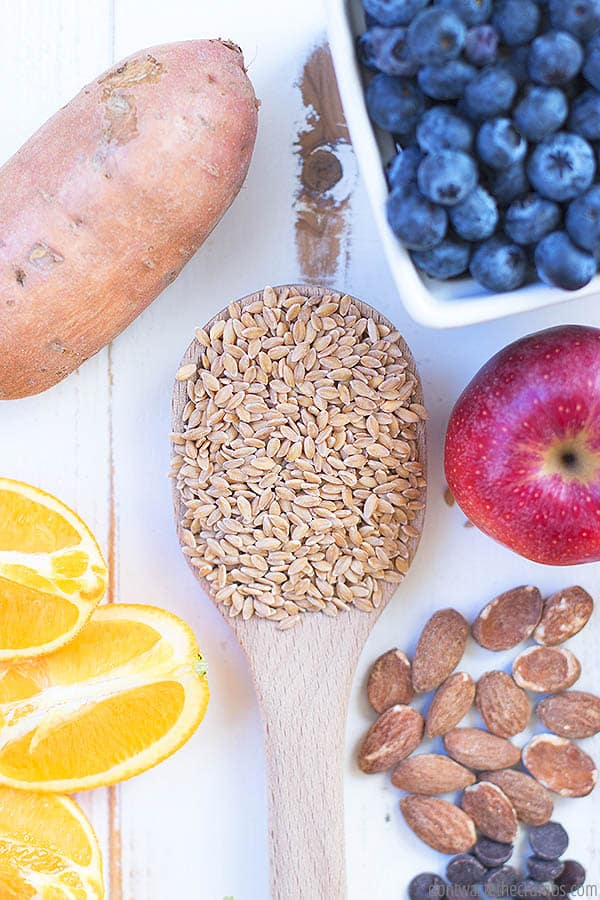
MORE HELPFUL TIPS TO SAVE ON FOOD
- 11 Simple Rules for a No Spend Challenge
- The Best Healthy Food to Buy in Bulk
- Creating a Pricebook
- 100+ Ways to Save Money
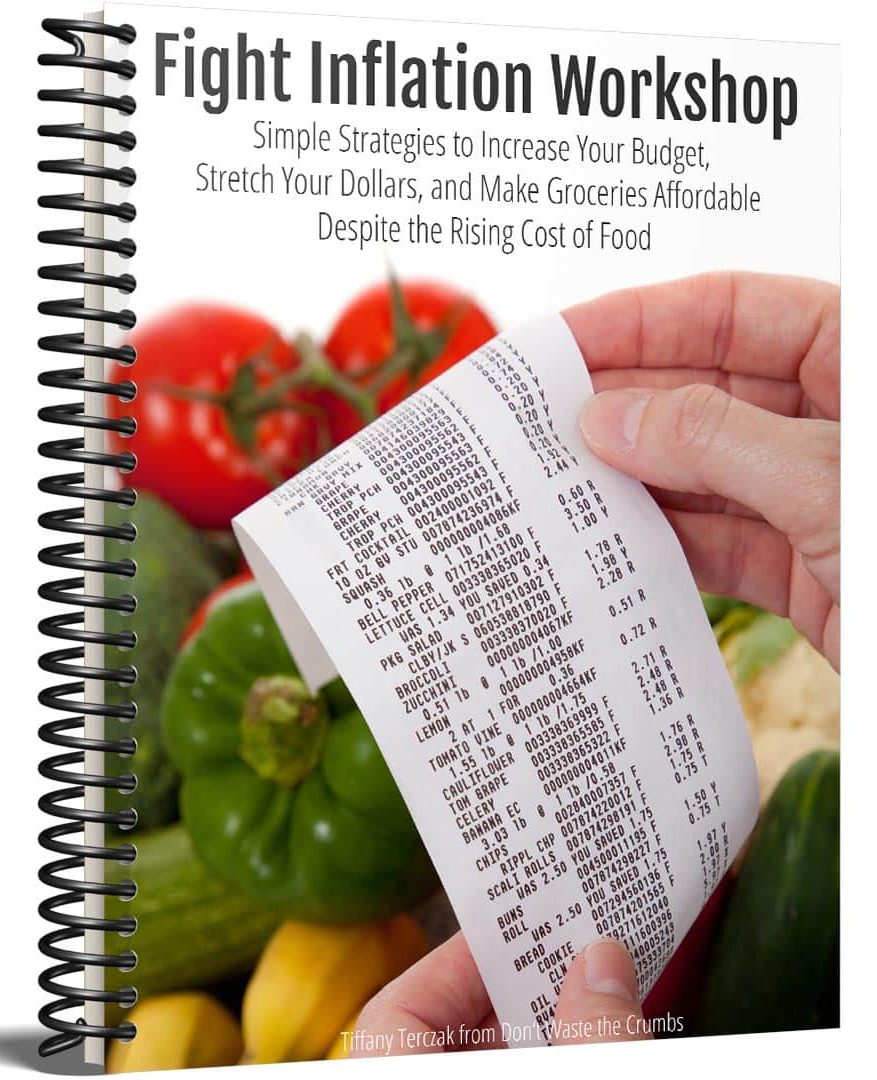

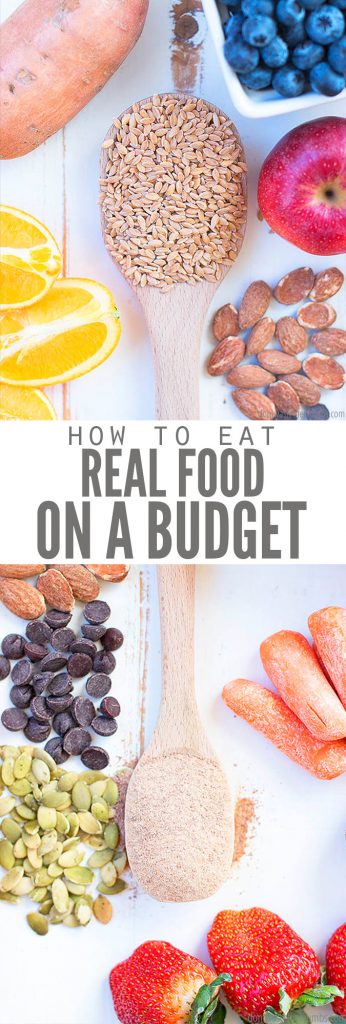
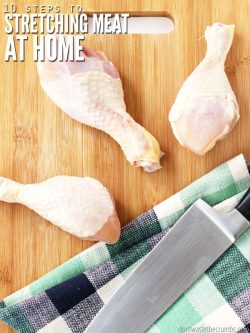

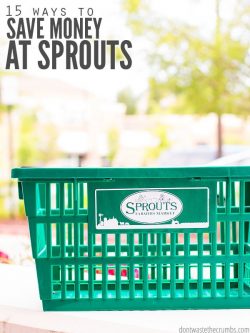
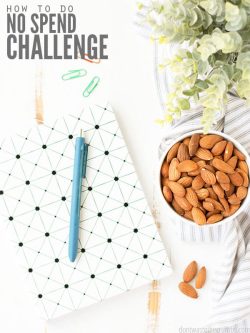

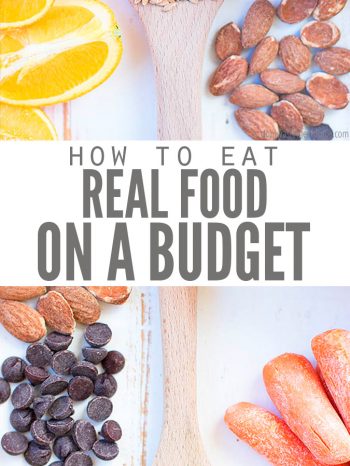
When you freeze cooked beans, do you try to get them perfectly dry first, or do you freeze them in some of the bean liquid?
Do you freeze them in plastic freezer bags, or in jars?